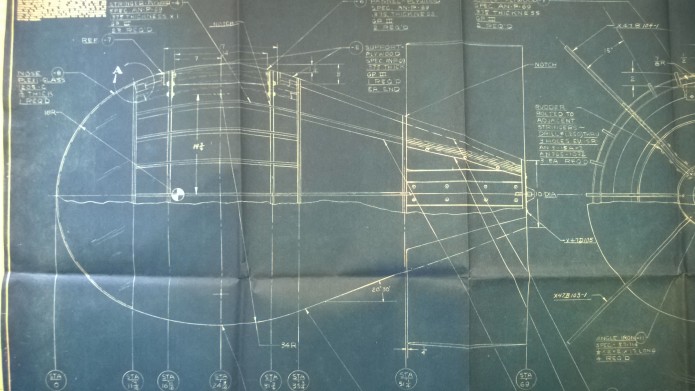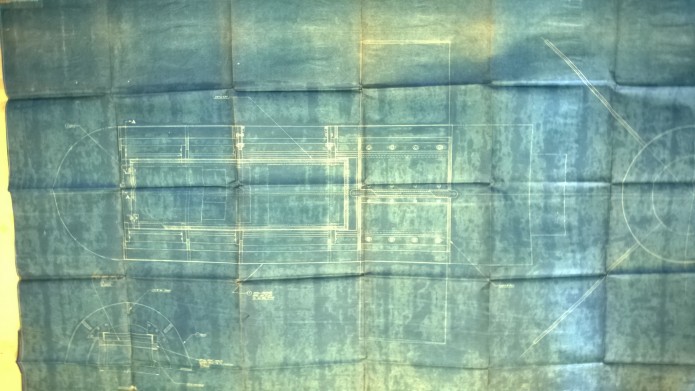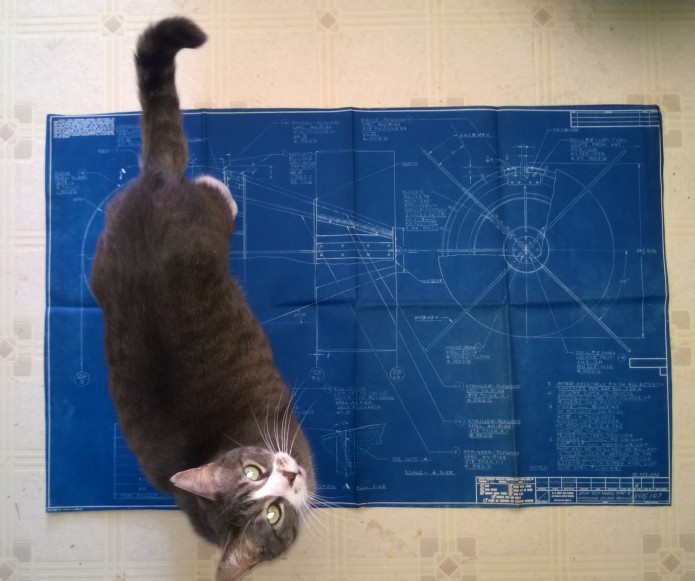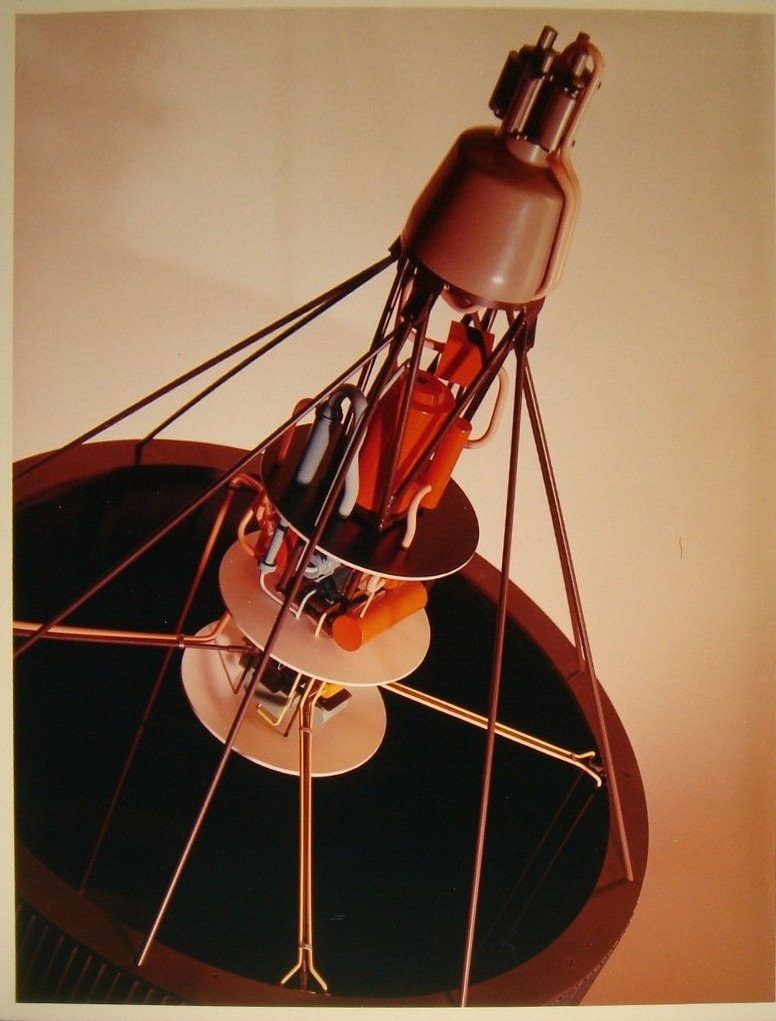Further progress.
It has been a good long while since I’ve worked on this. But now that my arm has regained functionality and I’ve gotten THESE out of the way (come on, folks, buy up!), I’m back to working on the “Deep Impact” Messiah model for Fantastic Plastic.
Note: Some photoetch is pretty much inevitable for this kit. But there are some parts, I’m thinking mainly of the structural supports that hold the “outrigger” boosters, that would benefit from something like laser-cut aluminum parts about 1/8 inch thick. Is this even remotely feasible on a budget? Anyone know anything about such things?
This is the second of four “PDF Reviews” I plan to have in October, to make up for the lack of any in September. The idea is to present interesting online resources for those interested in the sort of aerospace oddities that you can find in the pages of Aerospace Projects Review. This little project is supported through my Patreon campaign; at current levels, I’ll post two such reviews per month. If you’d like to see more, or just want to contribute to help me along, please consider becoming a patron.
This one is a bit different from usual. Instead of a report full of art and diagrams and charts and, well, sentences, this one has none of those. Instead, what it does have is 5,271 pages of data. Data, specifically, on the X-Y-Z positions of every single vertex of every single tile on the Shuttle. Of what value is that? Well, someone with a whole lot of patience could, I presume, feed this data into a 3D modeling program and produce a *really* accurate model of at least part of the Space Shuttle. So… knock yourself out.
Orbiter Coordinates of All the Vertices on the Outer Mold Line (OML) of Each of the OV-ID5 Tiles
The direct download link for the PDF file is HERE.
Not long ago, I was alerted to a pair of eBay auctions for vintage blueprints of “Supersonic Escape Capsules.” The blueprints, produced by the US Army Air Forces, depict models of the capsules made from plexiglas and plywood. This would be generally interesting to me, but one of the diagrams seemed to indicate that the diagrams might not be what they said they were. Instead, it looked a *lot* like an aerodynamically improved “Fat Man” atom bomb. I suspected that what was for sale were actually test or display models of early atom bomb casings, intentionally mis-described for security reasons. I managed to score both blueprints with surprisingly minimal fuss.
Upon receipt of the blueprints, my suspicion that at least one of them depicts an evolved Fat Man seems to have been misplaced. Fat Man was about 60 inches in diameter; the model is 38.5 inches in diameter, which would make for an odd scale. But the idea of a supersonic escape capsule being studied in 1946 is also odd, since the USAAF was years from having supersonic aircraft. And the configurations don’t really seem to work as escape capsules; typically such things are the entire cockpit which can break away from the aircraft, but these would make for very unfortunate cockpits for supersonic aircraft. So at the current time I can’t quite figure this one out. I’ll continue to see if I can run down info on this, but leads are few.
I have not scanned in these blueprints yet. They’ve been folded up longer than most of the people reading this have been alive, so it’ll take a good long time to flatten them out and make them safe for scanning. But I’ve taken some photos, which I’ve made available in full rez in a ZIP archive for all of my APR Patreon patrons. The APR Patreon page is HERE. If you want to help preserve and make available obscure aerospace history items such as these, please consider contributing to the APR Patreon. For as little as $0.75/month, you can help out, plus gain access to a bunch of aerospace “rewards” like these. You can also help out by helping to spread the word.
The first “escape capsule” on a quite good vintage blueprint. The resemblance to “Fat Man” is obvious… but likely dubious. It’s a close match to the Davy Crockett warhead from a decade later.
The second “escape capsule,” on a larger and more badly faded blueprint.
One of the problems with photographing large format blueprints is the almost inevitable groupies. Cats like paper. Cats *love* crinkly paper. And 70-year-old vellum blueprints are the crinkliest of crinkly paper. Fortunately, no damage done.
Spotted on ebay a while back. The writeups suggested that this was the actual SNAP 8 #2 reactor, but it sure looks like a mockup to me. The SNAP-8 reactor could generate a healthy 1 megawatt of thermal energy using 18 pounds of nuclear fuel.
A 1970’s (and boy does it show) film by NASA that *briefly* depicts O’Neill cylinder colonies, but mostly deals with the Stanford Torus:
[youtube EgrdAUFFMrA]
With the recent cat illnesses, serious dropoff in business and increase in vet bills, stress levels hereabouts have been at near-historic levels. But hey, at least I haven’t yet contracted a life threatening case of bronchitis in 2014 (that’s me, always looking on the bright side). One of the consequences of stress is a decrease in lesser creativity… I might still be able to creatively think myself out of some emergency situation, but art? Feh. Gone.
Fortunately, things are starting to crawl back towards the normal only-slightly-apocalyptic level of DOOM stress, and creativity is starting to slooowly return. So, some updates:







